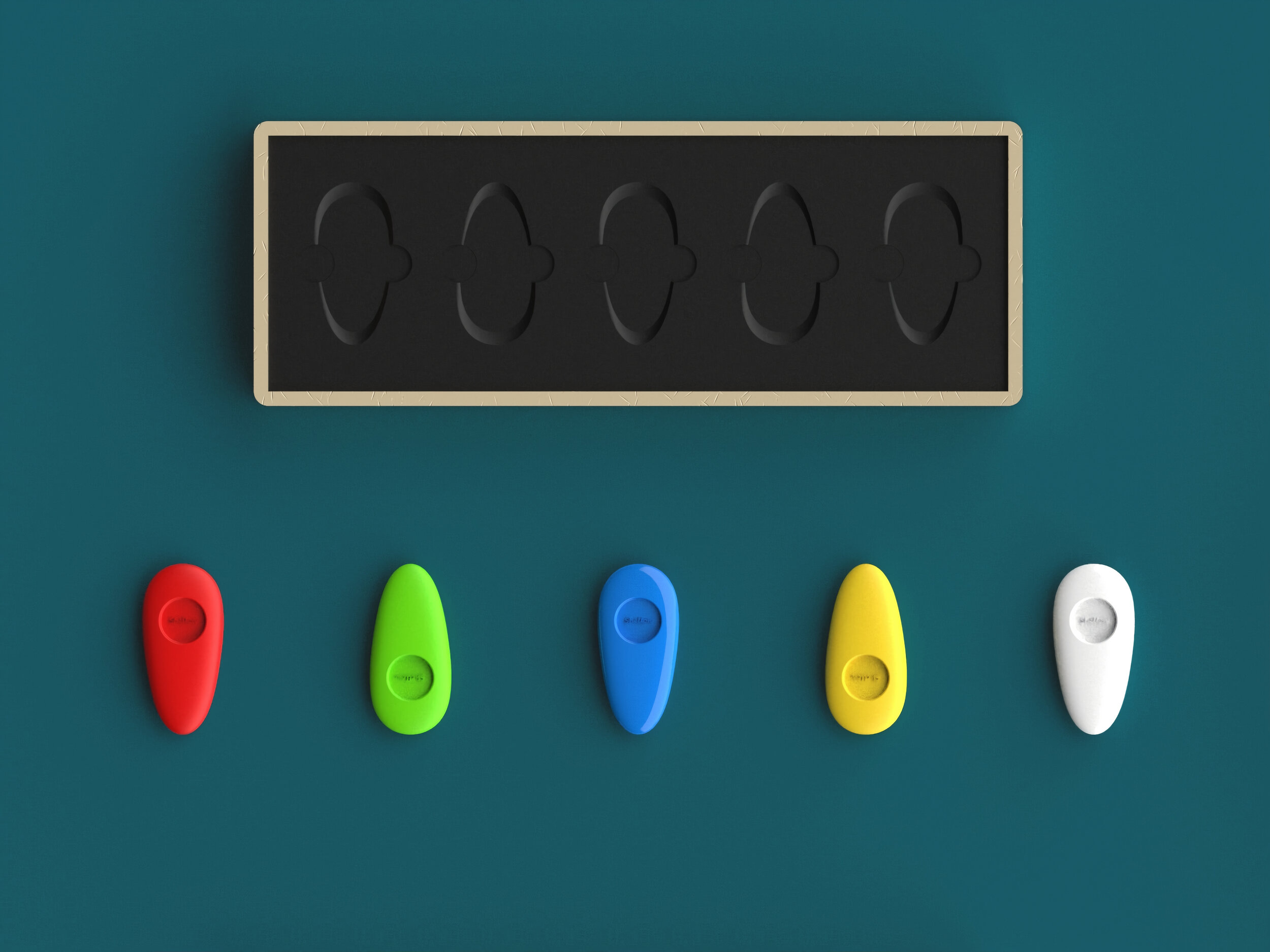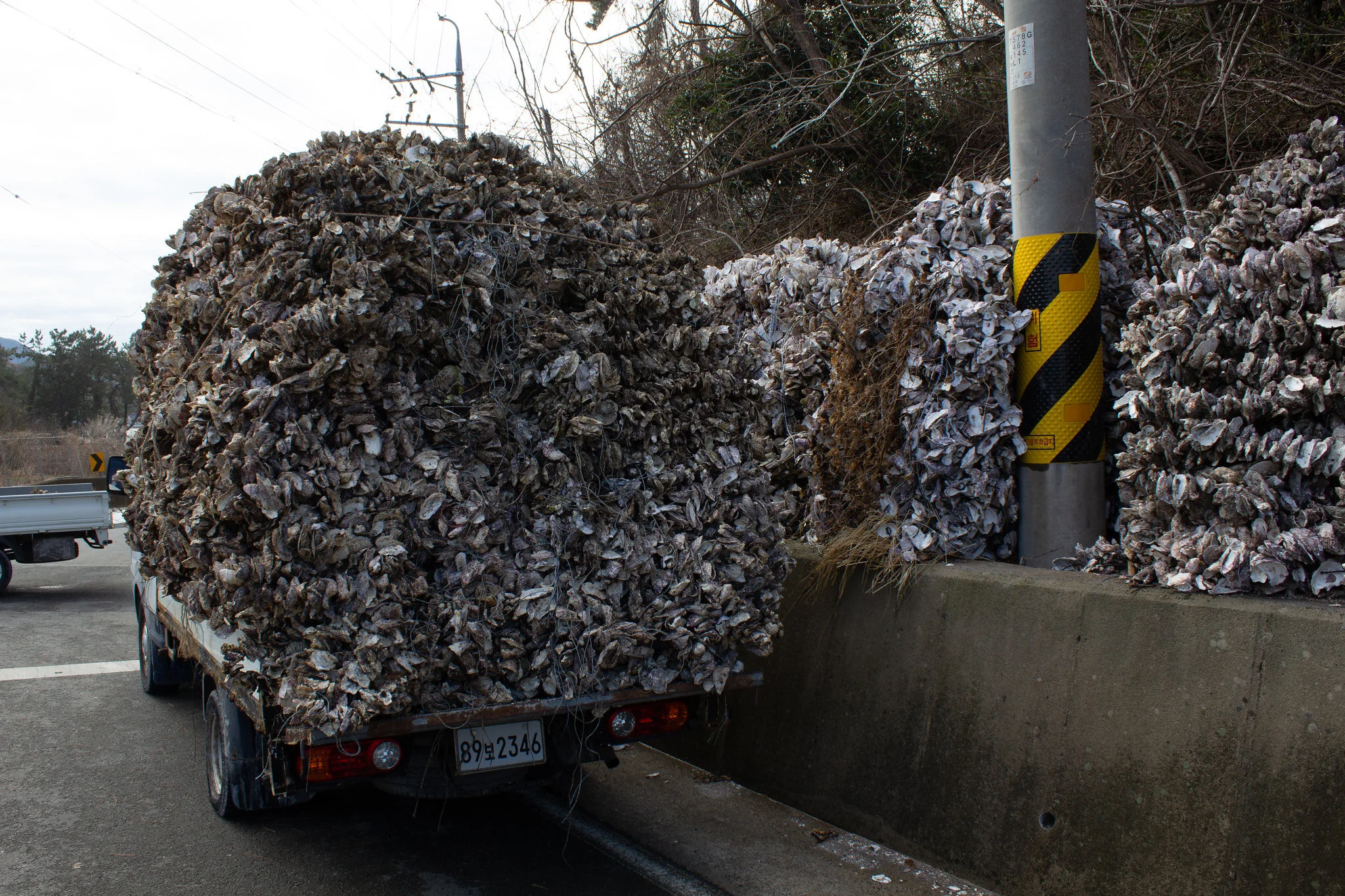
Phosphorescent Crayons
Using oyster shells as a main resource to reduce waste and increase public awareness.
Environmental + Public Awareness Design
Material Based Approach
Individual Project
February 2020 - March 2020 (4 weeks)
About Phosphorescence
What is it?
As a type of photoluminescence, phosphorescent materials reversibly emits visible light in response to absorbed light.
While not requiring any electricity, the degree of luminance and its longevity can vary depending on the level of excitation achieved from another light source.
How is it made?
Phosphorescent materials are usually made with Zinc, Magnesium or Calcium Sulphide combined with alkaline earth metals. In order to mix the materials together, they are heated up until nearly 1000°C / 1832 °F.
Oyster Shell Waste in South Korea
In South Korea, there is an intense demand for oysters.
Most oysters are produced in the southern coasts of Korea and apparently almost 300,000 tons of shell wastes are created every year.
In order to gain a better understanding of the situation, I visited Tongyeong , a city in the middle of the southern coast area, where more than half of the shell wastes were being produced.
Why is it a problem?
What is being done already?
In order to reduce the excessive amounts of oyster shell wastes, several factories were grinding the shells to utilize them as fertilizers for farms.
Even though the upcycling system seemed like a positive factor, it was impractical and not enough to raise public awareness about the situation.
Oyster Shells and Phosphorescence
The Potential
According to research, the oldest known reference to luminescent phosphors mentions how they were derived from the calcium of seashells and were used in ancient Chinese paintings.
A potential was spotted in the crushed oyster shells, which are mainly composed of calcium carbonate, that it could be mixed with sulfur and a minute amount of heavy metal (Copper, lead etc) to become a calcium sulfide phosphor.
The “Formula”
According pre-existing researches and experiments, in order for the oyster shells (CaCO3) to become phosphorescent, certain applications of heat and additions of other materials are needed.
Spotted Design Opportunity
“ To take advantage of the potential phosphorescence of the the oyster shell waste and turning the substance into a new product, while also increasing public awareness of the problem itself. ”
Design Process
Initial Ideations
The focus was on what to create with the phosphorescence created from the oyster shells.
The idea of phosphorescent crayons was chosen because of its potential of increasing public awareness, while also providing education for children.
Concept Developments & Rapid Prototyping
Final Model
Expected Impact of Shellon
Further Considerations
Further investigations are needed regarding safety and toxicity of the crayons, although there are some glow-in-the-dark crayons are already available and approved for use.
Marketing strategy needs to be considered. How would Shellon be advertised to the public and encourage children to use it?
Lessons Learned & What’s Next?
Material driven approach is a great tool in design, having a great potential of opening new and creative solutions.
Natural smart materials have a promising future in terms of sustainability, compared to synthetic materials.
Wastes could become a resource for new products, which is crucial considering the significant challenges of our time: managing waste and pollutants.
Detailed manufacturing methods and distribution needs further investigations.













